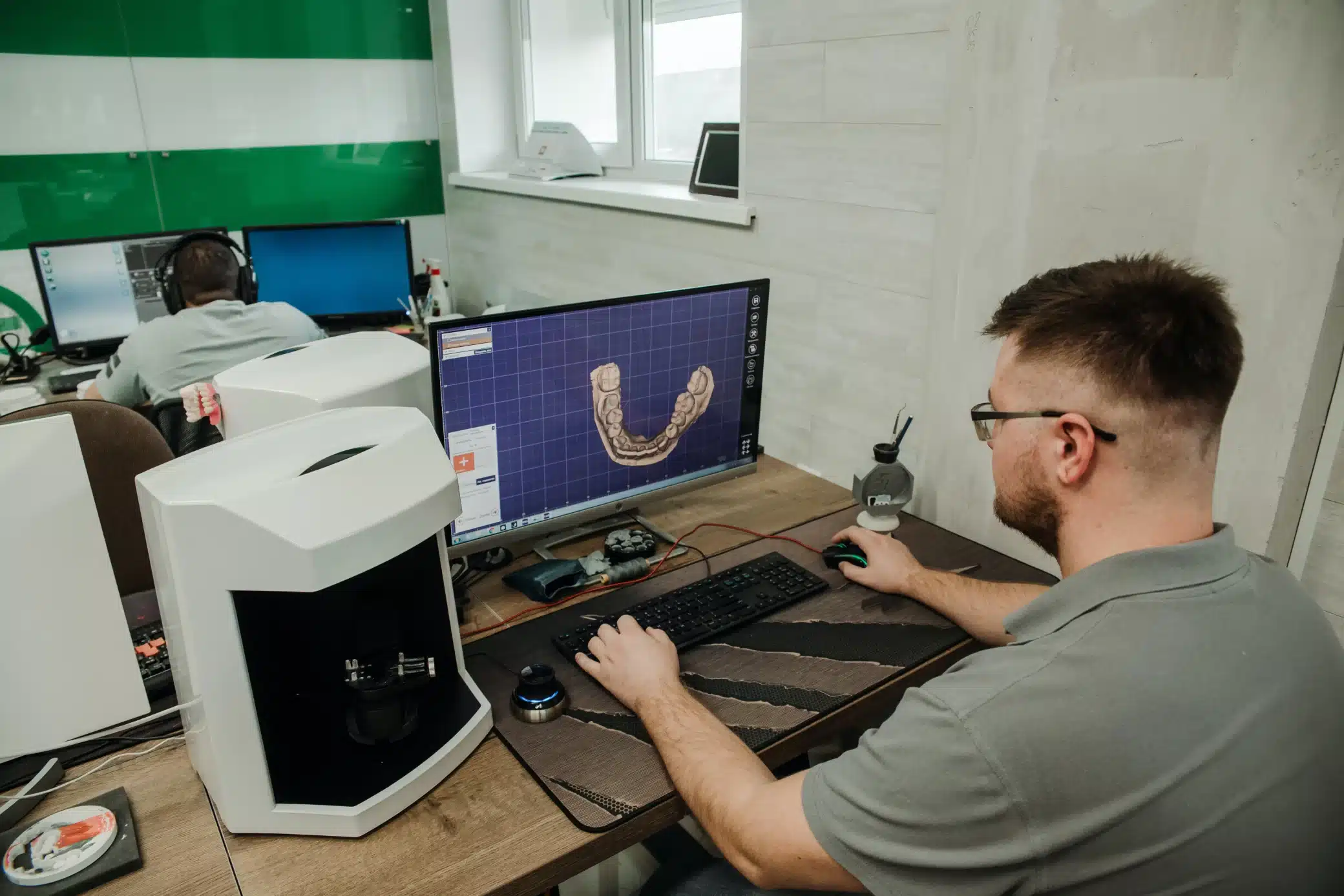Apps & Software
A Step-by-Step Guide to 3D Virtual Staging for Realtors and Hmeowners

Table of Contents
Selling a home can be challenging, especially if it’s vacant or needs a bit of sprucing up. In the past, realtors and homeowners had to physically stage the property to make it more appealing to potential buyers.
However, in recent years, 3D virtual staging software has become increasingly popular as a cost-effective and efficient alternative to traditional staging methods. In this article, they’ll provide a step-by-step guide to 3D virtual staging for realtors and homeowners.
What is 3D Virtual staging?
3D virtual staging creates realistic home images using software that simulates furnishings and decor. It allows realtors and homeowners to digitally represent a property with realistic furniture, artwork, and other design elements that help prospective buyers visualize themselves living in the space.
Step 1: Take High-Quality Photos of the Home
The first step in the 3D virtual staging process is to take high-quality photos of the home. The photos should be well-lit and capture each room from multiple angles to give the designer a comprehensive view of the space. This step is essential because the more information the designer has, the more accurate the final product will be.
Step 2: Choose a 3D Virtual Staging Software
The next step is to choose a 3D virtual staging software. Several options are available, and each has its strengths and weaknesses. Some popular options include Virtual Staging Solutions, BoxBrownie, and PadStyler. So choosing software that meets your specific needs and budget is important.
Step 3: Upload Photos to the Staging Software
Once you have chosen a 3D virtual staging software, the next step is to upload high-quality photos to the software. The software will use the photos to create a 3D representation of each room in the home. This process may take several hours or even days, depending on the software you choose and the size of the home. Adobe 3D AR experts say, “Tools to flesh out your new ideas.”
Step 4: Stage Each Room
After the software has created a 3D representation of each room in the home, it’s time to start staging. This is where the software shines. You can choose from various furniture and decor options and arrange them in each room to create a realistic representation of what the home could look like. You can also change the color of the walls, add or remove artwork, and make other design changes to make the space more appealing.
Step 5: Review and Share the Final Product
The final step in the 3D virtual staging process is to review and share the final product. Take some time to review each room and make any necessary changes. Once you’re happy with the final product, you can share it with potential buyers, post it on social media, and use it in marketing materials.
3D virtual staging is a game-changer for realtors and homeowners who want to sell their homes quickly and effectively. By following this step-by-step guide, you can create a digital representation of a home that is both realistic and visually appealing.
Remember to take high-quality photos of the home, choose a 3D virtual staging software that meets your needs and budget, upload photos to the staging software, stage each room, and review and share the final product. By using 3D virtual staging, you can save time and money while still showcasing a property’s full potential to potential buyers.
Apps & Software
The Ultimate Guide to Using a PDF Index Generator

Table of Contents
Have you ever felt lost in a sea of PDF files?
Finding what you need can be tough without the right tools. A PDF Index Generator changes that. It organizes your documents in a snap, making searching a breeze.
Ready to make your PDFs easy to use? Keep reading to learn how.
Choose the Right Tool
When looking for a PDF Index Generator, it’s important to find one that’s easy to use and fits your needs. Some tools have extra features like converting HTML to PDF C#, which can be useful for web developers.
You want to pick a tool that can handle big files fast, without making your computer slow. Look for something that lets you customize your index, so you can organize your files just the way you like. Reviews from other users can also help make your choice easier.
Customize Your Index
After choosing your indexing tools, it’s time to make it yours. Start by organizing your PDFs in a way that makes sense to you. You can group them by topic, date, or any other method that helps you find documents faster.
When setting up your index, add clear and detailed descriptions for each PDF. This will make searching easier later. The goal is to save time and reduce frustration when looking for specific information in your PDFs.
Efficient Searching Tips
Once your PDF index is set up, finding things becomes much easier. Start by using simple keywords that describe what you’re looking for. If you’re searching for a cake recipe, type in “cake recipe” rather than just “cake” or “recipe.”
This makes your search more specific and fast. Also, use the date or topic tags if you remember them. This helps narrow down your search even more. The clearer you are with your search words, the faster you’ll find your document.
Managing Large PDFs
Large PDF document management can feel overwhelming, but it’s easier once you know how. First, break the document into sections or chapters. This makes it simpler to find what you need.
If your tool allows, you can even create bookmarks or links to jump directly to different parts. Always give each section a clear name related to what it’s about. This way, when you’re searching, you can go straight to the part you want without flipping through pages and pages.
Saving and Sharing Indexes
Creating and sharing your PDF index is a breeze. Once you have everything organized, you can save your index. This makes it super easy to find what you need later on.
If you need to work with others, you can share your index too. This is great for group projects or when you need to give important information to someone else.
Just make sure the tool you picked lets you share easily. This way, everyone can stay on the same page and work more efficiently.
The Right Approach to Using a PDF Index Generator
Using a PDF index generator can make your life a lot easier. It helps you find what you need fast, so you don’t have to spend hours looking through files.
If you’ve got lots of PDFs, this tool is a game-changer. Start using a PDF index generator today and see how simple managing your documents can be!
Apps & Software
Wdroyo Technology: Everything You Need To Know

Table of Contents
In the realm of technological advancement, Wdroyo Technology emerges as a significant innovation poised to revolutionize various industries. Wdroyo-Technology encompasses a range of cutting-edge solutions and methodologies designed to optimize processes, enhance efficiency, and drive innovation across diverse sectors. From artificial intelligence and machine learning to data analytics and automation, Wdroyo Technology integrates advanced tools and techniques to address complex challenges and unlock new possibilities. This introduction delves into the essence of Wdroyo Technology, shedding light on its principles, applications, and transformative potential in shaping the future of technology-driven industries.
The Evolution of Wdroyo Technology: From Concept to Implementation
Wdroyo Technology has undergone a remarkable evolution from its conceptual origins to its widespread implementation in various industries. Initially conceived as a response to the growing complexity and demands of modern business environments, Wdroyo-Technology has evolved alongside advancements in artificial intelligence, data analytics, and automation. The concept of Wdroyo Technology originated from the recognition of the need for integrated solutions that could streamline processes, optimize resource allocation, and enhance decision-making capabilities.
Over time, through extensive research, development, and experimentation, Wdroyo-Technology has matured into a comprehensive framework encompassing diverse tools, methodologies, and algorithms. Today, organizations across sectors are embracing Wdroyo Technology as a strategic imperative, leveraging its capabilities to drive innovation, gain competitive advantage, and adapt to rapidly changing market dynamics. As Wdroyo-Technology continues to evolve, its potential to reshape industries, redefine business models, and empower organizations to thrive in the digital age becomes increasingly evident.
Wdroyo Technology in Action: Real-World Applications
In the real world, Wdroyo Technology is making a tangible impact across various domains, offering transformative solutions to complex challenges and driving operational excellence. One notable application of Wdroyo-Technology is in the field of healthcare, where it is revolutionizing patient care, diagnosis, and treatment. By harnessing the power of predictive analytics and machine learning, healthcare providers can analyze vast amounts of patient data to identify patterns, predict disease outcomes, and personalize treatment plans.
Advantages and Benefits of Wdroyo Technology
Wdroyo Technology offers a plethora of advantages and benefits across various industries, making it a compelling choice for organizations seeking to optimize operations, enhance decision-making, and drive innovation. One of the key advantages of Wdroyo-Technology is its ability to process and analyze vast amounts of data rapidly, allowing organizations to derive actionable insights and make informed decisions in real-time. By leveraging advanced algorithms and predictive analytics, Wdroyo-Technology enables organizations to identify patterns, trends, and correlations that may not be apparent through traditional methods.
The Future of Wdroyo Technology: Emerging Trends and Developments
As technology continues to evolve at a rapid pace, the future of Wdroyo Technology holds promise for even greater advancements and innovations. One emerging trend in Wdroyo-Technology is the convergence of different disciplines, such as artificial intelligence, blockchain, and the Internet of Things (IoT), to create integrated and synergistic solutions. By combining the strengths of these technologies, organizations can unlock new possibilities and address complex challenges in novel ways.
Key Components and Features of Wdroyo Technology
Wdroyo Technology comprises several key components and features that collectively enable its functionality and effectiveness across various applications. At its core, Wdroyo-Technology relies on advanced data analytics techniques, including machine learning, predictive modeling, and natural language processing, to extract insights from large and complex datasets. These techniques enable organizations to uncover patterns, trends, and correlations that can inform decision-making and drive strategic initiatives. Another essential component of Wdroyo-Technology is automation, which streamlines processes, reduces manual intervention and improves operational efficiency. By automating repetitive tasks and workflows, organizations can save time and resources while minimizing errors and improving consistency.
Challenges and Considerations in Adopting Wdroyo Technology
While Wdroyo Technology offers immense potential and benefits, its adoption is not without challenges and considerations. One of the primary challenges organizations face when adopting Wdroyo-Technology is data quality and availability. Effective implementation of Wdroyo-Technology relies on access to high-quality, relevant, and reliable data, which may be fragmented or siloed across different systems or departments. Ensuring data consistency, accuracy, and integrity is crucial for obtaining meaningful insights and making informed decisions.
Case Studies: Successful Implementations of Wdroyo Technology
Several organizations have successfully implemented Wdroyo Technology to achieve significant improvements in efficiency, decision-making, and business outcomes. One such case study is that of a large e-commerce company that utilized Wdroyo-Technology to enhance its recommendation engine. By analyzing user behavior and preferences, the company was able to deliver personalized product recommendations in real-time, leading to increased customer engagement and higher conversion rates.
Wdroyo Technology Across Industries: Impact and Opportunities
Wdroyo Technology is poised to have a transformative impact across a wide range of industries, presenting unique opportunities for innovation, growth, and competitive advantage. In the healthcare sector, Wdroyo-Technology holds promise for improving patient outcomes, optimizing healthcare delivery, and reducing costs through predictive analytics, personalized medicine, and remote patient monitoring. In finance, Wdroyo-Technology is revolutionizing risk management, fraud detection, and customer service by leveraging advanced data analytics and machine learning algorithms.
Moreover, in manufacturing and supply chain management, Wdroyo Technology is enabling greater efficiency, agility, and resilience through predictive maintenance, demand forecasting, and supply chain optimization. Beyond these industries, Wdroyo-Technology is also driving innovation in areas such as retail, transportation, energy, and agriculture, unlocking new opportunities for value creation and societal impact. As organizations continue to explore the potential of Wdroyo-Technology, the possibilities for innovation and disruption are virtually limitless, paving the way for a future characterized by enhanced efficiency, productivity, and sustainability.
Exploring the Potential of Wdroyo Technology: Research and Innovation
Research and innovation play a crucial role in unlocking the full potential of Wdroyo Technology and driving its continued evolution. In academia and industry alike, researchers are exploring new algorithms, methodologies, and applications to push the boundaries of what is possible with Wdroyo-Technology. One area of research focus is explainable artificial intelligence (XAI), which aims to enhance the transparency, interpretability, and trustworthiness of Wdroyo-Technology systems. By developing techniques to explain and interpret the decisions made by Wdroyo-Technology models, researchers are addressing concerns related to bias, fairness, and accountability, thereby facilitating wider adoption and acceptance of Wdroyo-Technology solutions.
Conclusion
In conclusion, Wdroyo Technology emerges as a transformative force with the potential to reshape industries, drive innovation, and address complex challenges in the digital age. Through its advanced data analytics, machine learning algorithms, and automation capabilities, Wdroyo Technology enables organizations to unlock valuable insights, optimize processes, and make informed decisions with unprecedented speed and accuracy. The case studies highlighted the tangible benefits of Wdroyo Technology across various sectors, illustrating its capacity to drive tangible results and deliver value in real-world applications.
Apps & Software
Integrating In Excel: A Quick Guide to Mastering Excel Integration

Table of Contents
Few inventions rival the personal computer. Not only does this device allow you to communicate with people across the world, but it’s also possible to run an entire business from a laptop.
However, you’ll need to use the right technology to achieve your goals. Working with Microsoft Excel data is a great way to handle large sets of numbers.
You can take the process a step further by using numerical integration in your Excel files. Not everyone understands how to get started with this method, though. Let’s explore the key information you need to know about integrating in Excel so you can avoid common mistakes.
Load Your Data
Before moving forward, you’ll need to load your data properly. You can do so by navigating to the appropriate file and right-clicking it.
Choose “open with” and then select Excel. If this application isn’t listed, you can click “other” and select it from your file browser.
When loading your data, there’s a chance your information will be imported incorrectly. You can also use C# create Excel file functionality if you would prefer to make one in an IDE.
Be sure to assess it so you can identify areas of concern. Even a single piece of missing or incorrect information can affect your outcome.
Convert Measurements
It’s not uncommon to work with datasets that contain different measurements. No need to convert them all to the same unit of measurement.
However, you should also consider whether you can simplify the units you use. A great example is working with data in miles per hour.
You could convert this value to “speed” instead so Excel can work with this information more efficiently. If you don’t need to make conversions, you can skip this step.
Determine Trapezoidal Dimensions
The result will present a trapezoidal area underneath the data curve. For this to be accurate, though, you’ll need to set the dimensions of the trapezoid you want to measure.
Some projects use the entirety of the graphs x- and y-axes. Others use multiple trapezoids.
Create the Necessary Columns
To display your information correctly, you’ll need to create a width, height, and area column for your Excel sheets. The width column represents the x-axis, while the height column represents the y-axis. You can calculate your area column by multiplying the values of the width and height columns.
Finally, you can create an integral column by highlighting all area values and typing “=SUM(.” Highlight all of the values you’re working with and press the Enter key to generate your result.
Verify Your Data
It’s worth repeating the steps above to verify your information. As previously mentioned, it’s easy to make miscalculations.
For important projects, this can be catastrophic. A bit of due diligence goes a long way when making sure your information is correct.
Integrating in Excel Is Simple
While it might seem difficult to understand at first, integrating into Excel is easier than most people anticipate. The tips in this guide will help ensure you get the right results for your project and avoid common issues.
Looking for other tech information that can help you in the future? Our blog has plenty of articles like this one. Be sure to check it out today!
-

 Travel4 years ago
Travel4 years agoThe Family of Kirk Passmore Issues a Statement Regarding the Missing Surfer
-

 Technology3 months ago
Technology3 months agoManyroon: The Key to Unlocking Future-Proof Business Solutions
-

 Cryptocurrency1 year ago
Cryptocurrency1 year agoBest Tips For Cryptopronetwork com Contact 2024
-

 Technology3 years ago
Technology3 years agoPaturnpiketollbyplate Login & Account Complete Guide Paturnpike.com
-

 Apps & Software2 years ago
Apps & Software2 years agoFapello 2023: Social Media Platform for NSFW Content
-

 Business3 months ago
Business3 months agoCoyyn.com Gig Economy: Smart Contracts and Fair Payments for Freelancers
-

 Business4 months ago
Business4 months agoAcumen: The Key to Smart Decision-Making and Success
-

 Technology4 months ago
Technology4 months agoEaton Z-SCH230/40-40 Brummt? Causes, Fixes, and Solutions






